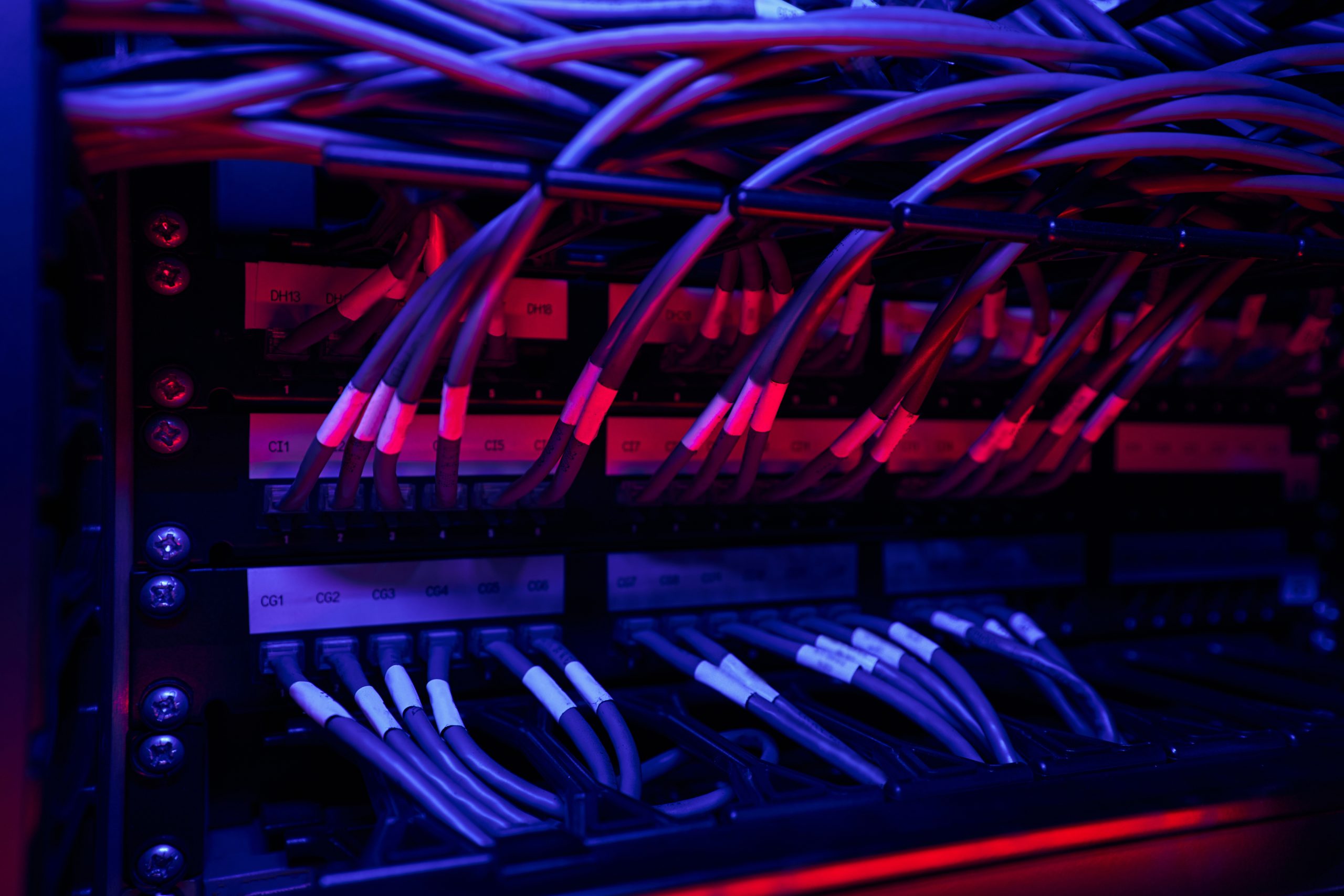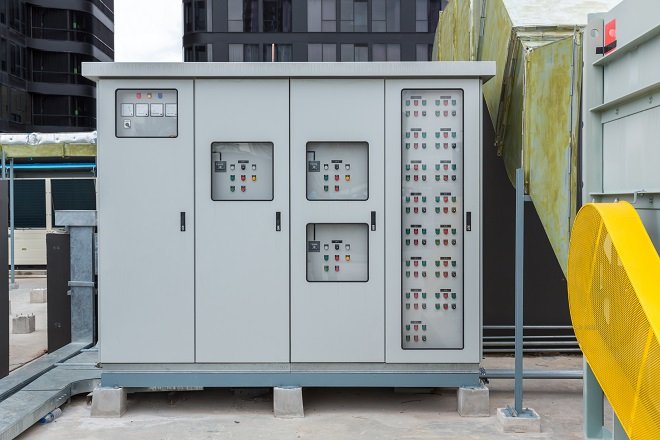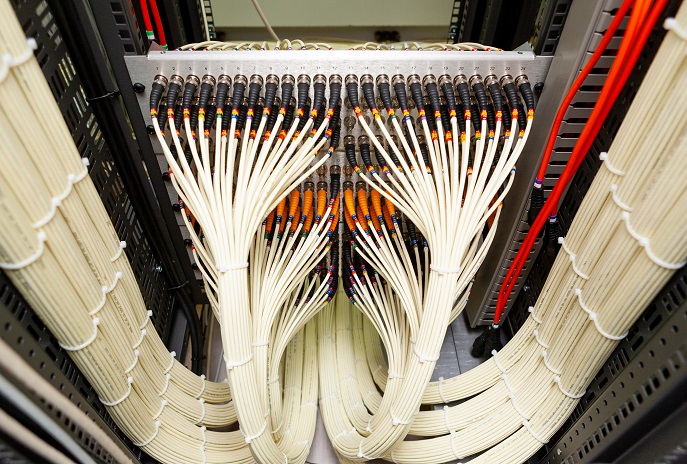
What is a Structured Cabling system?
Structured cabling is a complete system of cabling that supports several pieces of hardware in turn giving a comprehensive telecommunications infrastructure. Structured cabling is a kind of network cabling that serves a broad range of uses, like providing telephone service or transmitting information through a computer network.
Structured Cabling can be found in individual spans or maybe buildings across a whole campus. This is what makes it to be very important due to its capability to resist the fast changes that technology brings.
Structured Cabling components include twisted pairs as well as optical cabling in addition to patch panels as well as patch cables. The structured cabling process starts in the stage in which the service provider (SP) terminates. This time is the use of demarcation (demarc) or maybe a Network Interface Device (NID).
How Does Structured Cabling Work?
Making sure that your office has the right wiring is important. As communication technologies, such as VoIP and wifi all get more advanced, a structured cabling system is the only way to integrate new technology into an already existing infrastructure. Assembled from 6 subsystems, each has its own job and components. Structured Cabling includes 6 parts: Horizontal Cabling, Vertical Cabling, Entrance Facility Structured Cabling, Consolidation Point Structured Cabling, Telecommunications Enclosure, and Work Area Components.
Horizontal Cabling:

Horizontal Cabling subsystems provide power to telecommunications outlets and connect them to a telecommunications closet and include most of the wiring used in the total system. Other features include cable terminations (where wire or fiber connects to a device), telecommunication outlets (the data/voice outlet that desktop phones and computers plug into), one or more transition points (Where one type of cable connects to another type), cross connections between cable runs, equipment and subsystems are typically made with patch cords and jumpers. And more!
Vertical Cabling:

Vertical Cabling, also known as Backbone Cabling, is the core subsystem of cables and components that provide interconnections between and among telecommunication rooms, entrance facilities, and equipment rooms. It also connects separate buildings. Backbone cabling includes the outside-of-the-network communication infrastructure. This includes wire management components like conduits and raceways as well as cable penetration sleeves.
Entrance Facility Structured Cabling:
Entrance facility structured cabling subsystem includes all the parts needed to connect a building to an outside information or communications service provider, or even a private community cabling process. Entrance facility cabling could also serve as a wire replacement, linking the backbone cables between buildings. Electric codes enforced on the building dictate parts because of this subsystem.
Telecommunications Enclosure:

The Telecommunications Enclosure (or maybe space) is where the cable subsystem of horizontal and vertical cabling terminates. It might include primary as well as intermediate cross-connects, patch panels, and also other elements.
Consolidation Point Structured Cabling:

Even bigger networks might need 1 or even more centralized Equipment Rooms. These rooms are climate controlled, which means they can cool down huge tools like routers, servers, and other manual termination pieces. The entrance facility is the consolidation point for structured cabling. For smaller networks, the telecommunication enclosure or room can perform this function too.
Work Area Components:

Work Area subsystems are what link the end user’s workstation gear of computers, cell phones, and more to the telecommunications connector that is the result of horizontal cabling. Workplace components are the outlet & patch wires, along with the PC adapter, other cables, and fiber. Generally, the workstation gear can also be deemed parts from this subsystem.
What is Considered Low Voltage?
Low voltage wiring is usually an assembly of ingredients, cables, etc that power items or devices that are too small to use regular power wiring. The main things you will need are light fixtures, power outlets, switches, and immediate contacts for operating systems like cooling and heating. The lower voltage we’re discussing is for communication & less power-consuming equipment that uses 50V, such as thermometers and other sensors. The benefits are many, including saving time and effort, as well as receiving quality content that matches a human writer’s capability. These methods include voice/phone and more! Systems that use low-voltage cables to secure various connections.
Ethernet Cabling Installation:

Ethernet cables are often used to link devices like computers & routers in your neighborhood. Copper-based Ethernet wires are used for the transportation of information at various transmission speeds depending on the distance between the connected equipment. Cat5 wires are the most common and can transmit information at about 10 to 100 Mbps for connections of about 300 feet, and after that, there’s a loss in communication signal strength. Cat 5e cables transmit up to 1000 Mbps of data, whereas Cat 6 cables transmit 700 Mbps (up to). They can run for a much shorter distance before being damaged. Fiber optic installations are pretty common for the best speeds and far distances. Fiber uses glass cables, which transmit information through light rather than electricity like Ethernet does with copper cable.
Voice and Data Cable Installation:

Voice and data cable installations for telephone systems as well as internet access, make use of exactly the same types of copper-based ethernet as well as cup-based fiber optic cabling, based on the demands of the end user. We have many differences from copper to fiber, so you can find exactly the cable that is perfect for you. Information cabling contractors lay information cabling and power cable in the walls and ceilings of the workplace, to link devices to phone closets/telecommunication enclosures as well as servers. They also run co-axial cables from the building to telecommunications enclosures.
Security System Cabling:

Security systems and networks rely on structured cabling in order to function. Typically Cat5e or Cat6 cables are run through the wall, carrying the low-voltage signals (along with network, power, and data) needed to control systems. These cables can also provide power to security cameras and other power consumption devices, eliminating the need for separate wiring. Called Power-Over-Ethernet this technology requires a PoE network switch or similar device within the cable.
Intercom Cabling:

Low voltage wiring is involved in other devices too, including an intercom. Intercoms are stand-alone systems for communication between buildings, and the proper cabling is crucial to their functionality. An intercom is a tool where someone can speak and be heard by another person in a different room. It’s typically used as a security system or used to transmit messages. Wired intercom systems use Cat5, Cat 5E, or Cat 6 cabling depending on the application.
Types Of Cabling Used In Structured Cabling
You already know about what types of structured cables there are. I’ll just mention that these can transport data signals. There is no right or wrong type of cable. The type you use for a project depends on the job it’s assigned to, and your budget. A number of factors influence your decision when buying cables.
Fiber Optic Cable:

Fiber optic cables mainly consist of a tube made of glass or plastic that’s surrounded by copper wires. When the signal passes down the wire and illuminates the core, light bounces back and forth along the fiber, allowing for faster transmission. Fiber optic cables provide the best possible speeds and bandwidth, they also offer great signal clarity over very long distances. In other words, they’ll work especially well if you experience a lot of electrical interference in your environment.
Fiber optic cable is one of the faster ways to transmit data in an office setting. However, building out the structural support for that type of cabling can be expensive and takes time. Not everyone needs fiber optic cables. If you don’t need the speed, then it makes sense to upgrade to the fiber-optic structured cable system.
Copper Twisted Pair:

The most used type of cable is copper. The invention of the telephone, which is by far the most used communication in the world since its conception, was instrumental in the development of this technology. This technology has 8 generations and it’s still being improved on. The CAT-6a cable is one of the most popular types among modern networks. It’s also commonly referred to as CAT-6 or “CAT,” followed by a number and a letter denoting grades. Copper twisted pair cables come with a variety of shielding and insulation options. One reason they might be chosen is that they’re not susceptible to induced-emissions interference from motors, WiFi, and Bluetooth.
Coaxial:

Twisted pair cables have been around for a lot longer than coaxial cables, newer than fiber optic cable, and performance-wise, sit somewhere in between the two. Coaxial cable is cheaper than fiber optic cables and is better at covering long distances. But in certain cases, this can mean using the internet from outside your house!
Cable networks were originally designed for cable television, so coaxial cables are perfect for giving Internet service as well. Coaxial cable performs poorly at distances over 100 meters and needs to be complemented with other cabling types. With that said, it is a very cost-effective solution for delivering internet to homes and businesses.
Conclusion:
Low voltage wiring and structured cabling installation is a complicated task that should not be approached without thorough research and planning. This guide provides an overview of the basics of installation. The factors to consider when designing and installing a structured cabling network vary greatly depending on what technologies you’re using. As technology expands, there are going to be more component options and installation methods required by cable companies to keep up with the needs of the end users. Right now, there is certainly enough variation in product offerings for them to choose from. For peace of mind, hire a professional low-voltage wiring company that is committed to staying up to date with new technology & adheres to best practice standards for their specialty.



